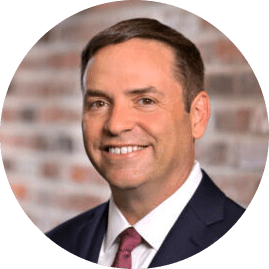President Trump has promised the American people a “fabulous” healthcare system. Here is a quick examination of his 7-point healthcare plan:
1. Repeal and Replace Obamacare
Originally, this is all we were hearing from Trump and Republican law makers, but new information was released after the GOP retreat in Philadelphia in January. Many Republicans are now starting to talk about “repairing” Obamacare instead of a full repeal, which is the approach I favor. The law needs improvement, but can be built upon. Repairing the law would also be easier from a political standpoint, and will cost taxpayers less money.
2. Modify laws to allow health insurance sales across state lines
Since my firm is based out of the Northeast, where the states and greater metropolitan markets are intertwined, I deal with this inconvenience on a regular basis. The idea is that by allowing insurers to compete across state lines, competition would increase and drive down costs. I would agree to some extent; however, some insurance companies have subsidiaries set up across state lines, which would most likely combine into one entity should this happen. At the very least, this would be more convenient for Americans.
3. Allow individuals to deduct health insurance premium
Currently, employers can deduct any premium they pay towards medical insurance. Employees can also deduct medical premiums from their taxable income if they buy health insurance through their employer. Individuals and families that buy health insurance on their own, or through the Obamacare exchanges pay premium with after tax dollars. Enacting this provision could save some of those people thousands of dollars.
4. Allow individuals to use Health Savings Accounts (HSA’s)
HSA’s have been around for years, and are an effective way to contain cost since they work in conjunction with High Deductible Health Plans (HDHP’s). It seems like the Trump administration would like to make them slightly more favorable from a tax and estate perspective. This could improve them slightly, however, in order for HSA’s to work more effectively, people need better tools to assess the actual cost of their healthcare.
5. Require transparency from all healthcare providers
To me, this is the single most important aspect of the plan that could have a significant impact on costs. Singapore has arguably the best healthcare system in the world, and in my opinion, we need to learn from their model. One of the keys to their success is total cost transparency by healthcare services as well as their private insurers. Singaporeans are also required to have a Health Savings Account. These factors enable them to create a truly consumer driven system. Should this provision happen here, it would be a great step towards real savings. However, my feeling is that this would be extremely difficult to achieve.
6. Block-Grant Medicaid to States
Obamacare offered states the option to expand Medicaid by allowing more individuals and families to qualify. Many states accepted, and these additional people were paid for by federal funds for the first 3 years. A portion of this cost will shift to the states this year. The proposed distribution of Block Grants in this situation is vague, but the consensus is that they will provide enough funds to pay for Medicaid at levels before the Obamacare expansion, which would leave a gap for the states that accepted the expansion. I think this point has more to do with overall investment from the federal government and how many people they plan to cover at 100%.
7. Break down barriers so drug providers of less expensive, safe products can enter the market
Besides transparency, this point could have the second largest impact on healthcare costs. Pharmaceuticals represent a large part of overall healthcare costs, and I believe this could lower them significantly. However, the likelihood of Congress taking on special interest in this industry is not very good, in my view.
Click here to read more content like this

Rob is an employee benefits expert with over 25 years of experience. He is the founder and principal of Precision Benefits Group, a leading provider of corporate benefits plans. He is a member of the Philadelphia Business Journal Leadership Trust and regularly contributes to the publication.
